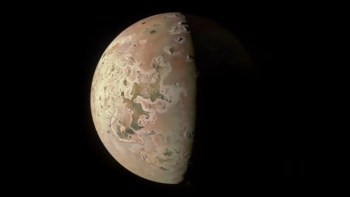
By Michael Banks
A sculpture inspired by the geometry of the neutrino detector at the Sudbury Neutrino Observatory (SNO) has been unveiled at Queen’s University in Kingston, Canada.
SNO, which operated from 1999 to 2006, was located 2.1 km underground in Sudbury, Ontario, and designed to detect neutrinos from the Sun through their interactions with a large tank of heavy water.
It was there that the Nobel laureate Art McDonald discovered that these solar neutrinos oscillate from one “flavour” to another, a result that meant that they must have mass. In 2015 McDonald shared the Nobel Prize for Physics with the Japanese physicist Takaaki Kajita, who made similar measurements on neutrinos created in the atmosphere.
Created by the mathematician George Hart from the State University of New York, the sculpture is about 1.5 m in diameter and made of 30 identical, laser-cut, wood components, as well as six brass rods.
“While creating this design, I was struck by the fact that both the mass of the Sun and the mass of water in the SNO detector are balls of fluids,” says Hart. “So the body of the sculpture conveys a sense of fluidity with its swirling 5-fold vortices.”
The sculpture will be presented to McDonald, who is director of SNOLAB – SNO’s successor – and Daniel Woolf, principal of Queen’s University, in early September. It will go on display in the newly renovated Stirling Hall at the university.



